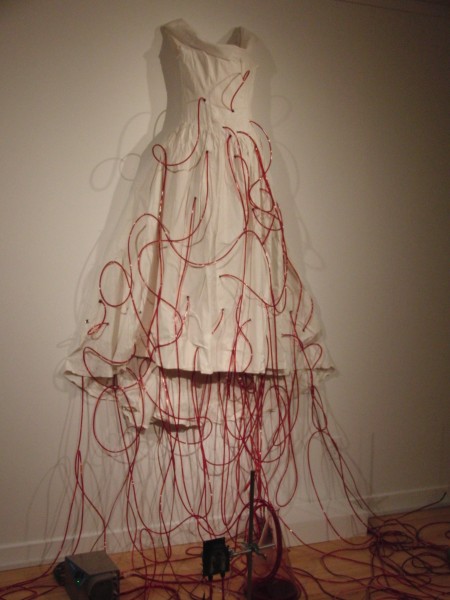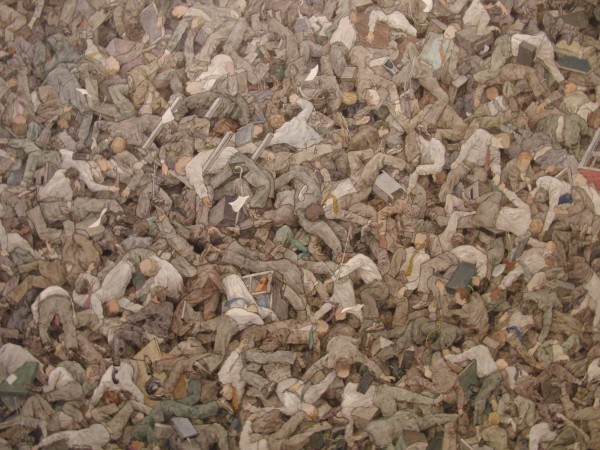Japan Society
333 East 47th St. at First Ave.
Through Sunday, June 12 (closed Monday)
Admission: $15 (free Friday from 6:00 to 9:00)
212-715-1258
www.japansociety.org
www.byebyekittyart.org
There’s only one week left before Japan Society’s engaging exhibit “Bye Bye Kitty!!!” goes bye-bye, so we highly recommend you do what you can to say hello before it leaves. (Sorry, we were trying to be cute.) Subtitled “Between Heaven and Hell in Contemporary Japanese Art,” the small but insightful show offers an alternative take on the cute kawaii and otaku culture that has been so prevalent in Japanese youth over the last few decades. “Bye Bye Kitty!!!” exposes the underside, if not quite dark underbelly, of that groovy scene with a collection of installation, videos, photographs, paintings, drawings, and sculpture that are often cute in their own way — until you look a little deeper. Makoto Aida’s “Harakiri School Girls” sets the tone for the exhibition, mimicking the charming covers found on Japanese manga but upon further examination focuses on a young girl with a samurai sword decapitating her schoolmates. Aida’s massive “Ash Color Mountains” wall painting is composed of hundreds of faceless, dead salarymen jumbled together (along with Wall-E and Waldo). Playing off the “Famous Views of Kyoto” paintings by Hiroshige, Yamaguchi Akira populates his “Narita International Airport” pen and watercolors with scenes of impending environmental disaster. Chiharu Shiota takes that most beautiful and representational of objects, a white wedding dress, and inserts multiple tubes coming out of it, extracting blood that continuously pumps through them, commenting on femininity, tradition, and virginity.

Chiharu Shiota, “Dialogue with Absence,” painted wedding dress, peristaltic pumps, transparent plastic tubing, dyed water, 2010 (photo by twi-ny/mdr)
Tomoko Shioyasu’s “Vortex” is an ultra-delicate cut-paper installation that hangs in the center of one gallery room, casting wild, intense shadows behind it. Miwa Yanagi’s “My Grandmothers” photos stage scenes where a group of Japanese women think they will be fifty years in the future, not necessarily predicting what would be considered a happy, normal life. Tomoko Yoneda’s simple yet evocative photos depict a location in Seoul that was used as a Japanese military hospital in the first half of the twentieth century and a place for interrogation and torture in the 1970s. The most exquisite pieces in the show come from Manabu Ikeda, whose three heavily detailed pen and acrylic ink drawings are awe-insipring and breathtaking, with “Existence” celebrating life, “History of Rise and Fall” mired in death and destruction, and “Ark” not exactly offering the way to a better world; be sure to spend plenty of time examining the myriad amazing intricacies of this fascinating series. Divided into three sections, “Critical Memory,” “Threatened Nature,” and “Unquiet Dream,” the exhibit also features works by Tomoko Kashiki, Rinko Kawauchi, Haruka Kōjin, Kumi Machida, Kohei Nawa, Motohiko Odani, Hiraki Sawa, Hisashi Tenmyouya, and Yoshitomo Nara, who says good-bye with a fitting farewell.
